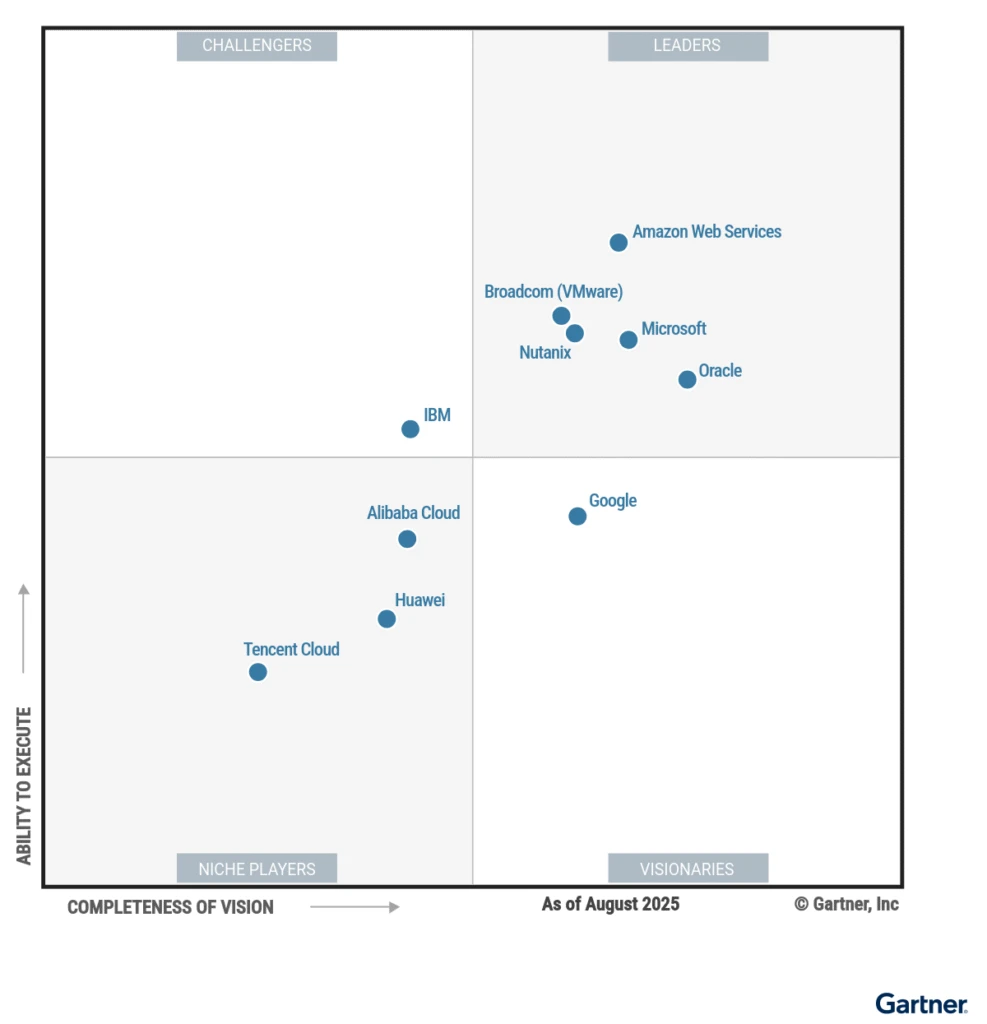We’re proud that Microsoft has once again been named a Leader in the 2025 Gartner® Magic Quadrant™ for Distributed Hybrid Infrastructure. This is the third year in a row we’ve been recognized by Gartner, and we feel it reflects the impact we’re delivering by helping organizations run workloads seamlessly across hybrid, edge, multicloud, and sovereign environments with Azure.

Azure’s adaptive cloud: built on Azure Arc and Azure Local
The reality for many organizations today is that not every workload belongs in a hyperscale datacenter. Azure’s adaptive cloud approach recognizes that reality and brings the cloud model to every environment through two core technologies.
Azure Arc brings Azure management to any environment, including datacenters, edge, and multicloud. It unifies on-premises and non-Azure resources through Azure Resource Manager and enables services such as Azure Kubernetes Service (AKS), Microsoft Defender for Cloud, Azure IoT Operations, and Azure AI Video Indexer.
Azure Local leverages Azure Arc to bring Azure services and management to customer-owned environments, enabling customers to run cloud-native workloads such as virtual machines and Arc-enabled AKS locally. Azure Local also supports Microsoft’s Sovereign Private Cloud strategy, enabling isolated, compliance-driven operations with Azure consistency.
Together, Azure Arc and Azure Local give customers unified governance, security, and management across distributed environments. They help organizations innovate faster, stay secure, and scale with confidence.
Real-world impact across industries
Azure’s adaptive cloud approach is especially valuable for organizations that need to balance local operations with the flexibility of the cloud. Manufacturers and industrial companies are deploying AI models at the edge to improve safety, quality, and automation while managing them centrally in Azure. Regulated sectors such as financial services, healthcare, and government maintain compliance and data residency as they modernize with Azure. Enterprises with distributed sites are using a single management plane to connect operations, improve efficiency, and gain real-time insight across locations.
Across these industries, we’re seeing customers embrace Azure’s adaptive cloud approach enabled by Azure Arc:
- Publix Employees Federal Credit Union (PEFCU) consolidated operations using Azure Arc and Azure Local, reducing disaster recovery time to under 10 minutes per VM and freeing engineers to focus on innovation.
- Delta Dental of California modernized its core payor system with containerized workloads, improving performance, uptime, and compliance.
- CDW migrated 800 virtual machines to Azure Local, doubling SQL performance and strengthening governance and security with Azure Policy and Microsoft Defender for Cloud.
- Coles and Emirates Global Aluminum (EGA) continue to scale operations with Azure Local, running GPU-enabled AI workloads that enhance analytics, customer experiences, and manufacturing insights.
These organizations are adopting Azure’s adaptive cloud approach to run workloads where they are needed most while unifying operations, security, and innovation across every environment.
Building the future together
Recognition from Gartner is an important milestone to us, but what matters most is what our customers are achieving with Azure every day. We’re continuing to invest in making Azure more adaptive, more secure, and more capable across every environment so organizations can innovate on their own terms. We’re grateful for the trust our customers place in us and inspired by how they are shaping the future of cloud infrastructure right alongside us.
Learn more
- Learn how your organization can accelerate innovation with Azure Local and Azure Arc.
- Explore Sovereign Private Cloud with Azure Local and Microsoft 365 Local.
- Join us at Microsoft Ignite in San Francisco this November to explore the latest in enterprise innovation.
Gartner, Magic Quadrant for Distributed Hybrid Infrastructure, Julia Palmer, Jeffrey Hewitt, Dennis Smith, Tony Harvey, Elaine Zhang, 8 September 2025.
GARTNER is a registered trademark and service mark of Gartner and Magic Quadrant is a registered trademark of Gartner, Inc. and/or its affiliates in the U.S. and internationally and are used herein with permission. All rights reserved. This graphic was published by Gartner, Inc. as part of a larger research document and should be evaluated in the context of the entire document. The Gartner document is available upon request from Microsoft. Gartner does not endorse any vendor, product or service depicted in its research publications, and does not advise technology users to select only those vendors with the highest ratings or other designation. Gartner research publications consist of the opinions of Gartner’s research organization and should not be construed as statements of fact. Gartner disclaims all warranties, expressed or implied, with respect to this research, including any warranties of merchantability or fitness for a particular purpose.

